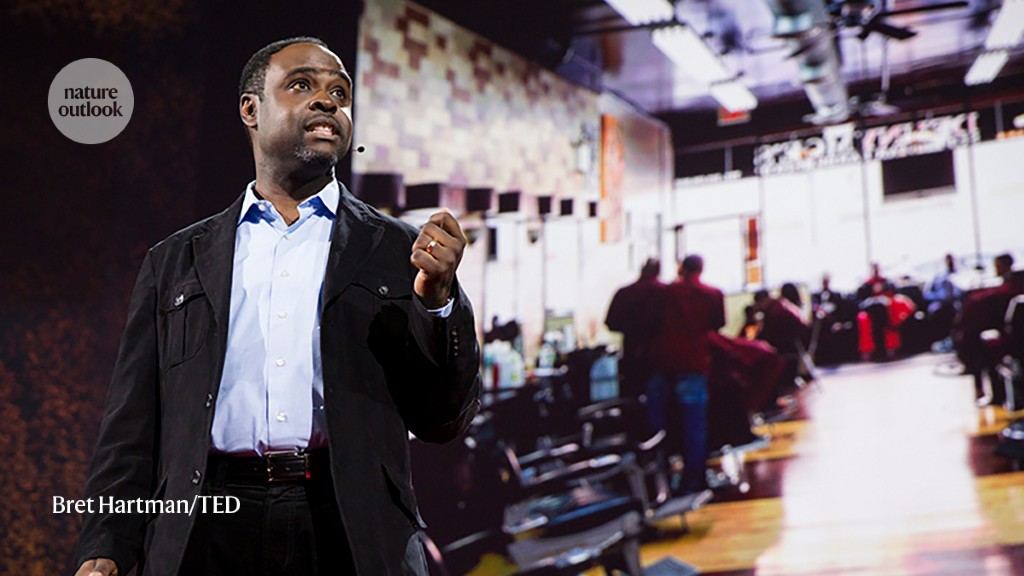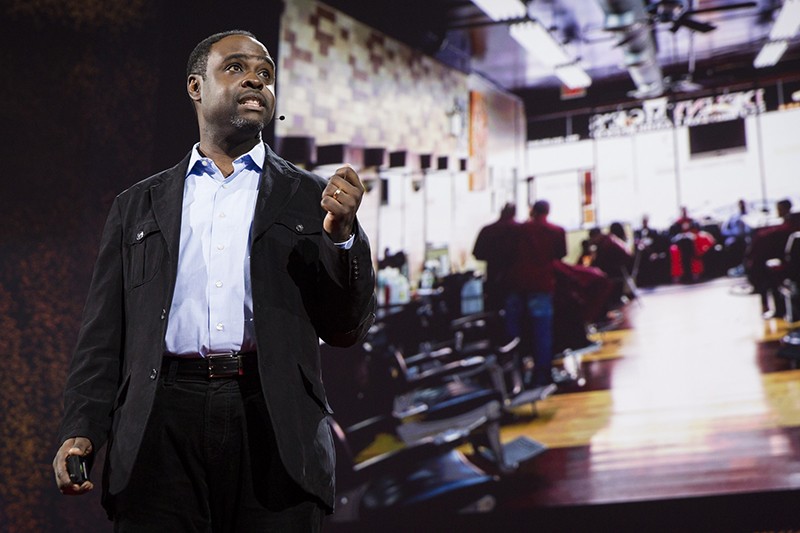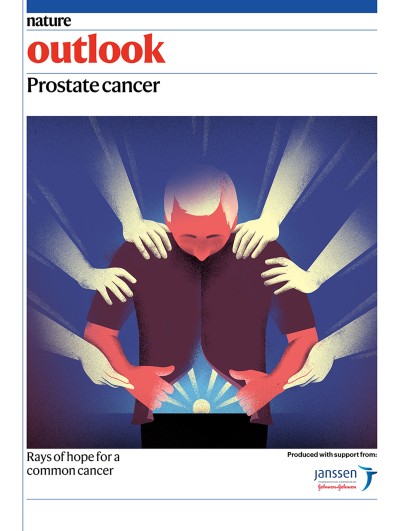Prostate cancer is more common in Black men than in white men — one in six Black men in the United States will develop the disease, compared with one in eight white men. Not only that, but Black men are also twice as likely to die of the disease (A. N. Giaquinto et al. CA Cancer J. Clin. 72, 202–229; 2022). Joseph Ravenell, a population-health researcher at New York University Grossman School of Medicine in New York City, spoke to Nature about the causes of disparities in prostate cancer outcomes, and why important work to provide equal access to care might not eliminate racial inequity by itself.
Why does prostate cancer affect Black people differently?
Most disparities are due to social determinants of health — factors such as socioeconomic status, access to care and insurance coverage. The evidence shows that these factors play a much bigger part in disparities than does biology.
Part of Nature Outlook: Prostate cancer
For example, Black men often present with more aggressive prostate cancer than other ethnic groups. Although some cases might be due to genetics, many of them are because of a lack of access to care — too often, diagnosis comes late, after the disease has progressed. If we can screen and diagnose men sooner, we’ll have a better chance of detecting cancer at an earlier, more-treatable stage.
Social determinants of health usually fall into areas that health-care providers think they have little control over. But, I think it’s really important for us to change that way of thinking. We need to start focusing on social determinants as the root causes of health disparities. This mindset will help us to address more than just the medical problems that we diagnose in our offices.
How can we improve access to care?
Many Black people in the United States have a long-standing mistrust of the medical system, as a result of both historical scientific misconduct and mistreatment in the medical setting. One result is that Black men are often less likely to engage in primary care. To address that, my colleagues and I have gone outside the clinic and into community-based settings, such as barbershops and churches, to connect with people, to educate them and to provide ways for them to engage with primary-care providers. These places are ideal because they are places that lots of men trust.
My team and I are also studying the possibility of approaching this problem the other way round, by bringing community health workers into our clinics — not medical professionals, but trusted people from the community who can be trained to communicate specific health messages. If these people can be brought in to talk to Black men about prostate cancer screening, for instance, we might be better able to ensure that patients can make an informed decision.
Is improving access to care alone enough to reduce disparities?
Myself, Danil Makarov, a urological oncologist at New York University Langone Health in New York City, and our colleagues performed a study in 2021. Using the US Veterans Health Administration (VHA) database, we classified people with prostate cancer according to whether treatment for them would have been of low-, intermediate or high benefit (T. Rude et al. Cancer 127, 3985–3990; 2021). We found that Black men who would have benefited highly from treatment were less likely to receive it than men in the same disease category who were not Black.
More from Nature Outlooks
In the general population, you could point to access to health care as a potential driver of that difference. But the VHA is one institution where access is not really an issue — essentially all veterans who receive care in the VHA system have equal access to free or low-cost care. The fact that our team still saw significant disparities in treatment in this population means that there are other factors behind these racial differences that need to be investigated. Those are important areas for us to focus on in the future.
Were you surprised by that result?
No — other studies, going back decades, have indicated that racial differences in treatment can persist even after controlling access to care. It turns out that even when you eliminate the system-level factors, problems at the level of the patient and provider remain, such as implicit bias — the unconscious stereotyping of people of colour. Various studies have shown, for example, that some providers offer different treatments to people on the basis of race.
What are some key ways to reduce bias among providers?
One of the best ways to combat implicit bias is to raise awareness of it, and to bring the unconscious to the conscious. But to provide equitable care to all, we also need to educate physicians on the different social and environmental contexts from which their patients come. That includes education about mistrust and the history of structural racism, both in the United States and in medicine specifically. Understanding social determinants of health such as these will result in more-inclusive care.
One of the things that needs to be focused on is how we can increase the diversity of our medical students, trainees and faculty staff members. As we think about the future of medicine and health equity, it’s crucially important that the physicians of tomorrow reflect the growing diversity of our population.








More News
Daily briefing: Carrion crows have counting skills seen only in people
Researcher parents are paying a high price for conference travel — here’s how to fix it
Asymmetric hydrogenation of ketimines with minimally different alkyl groups – Nature